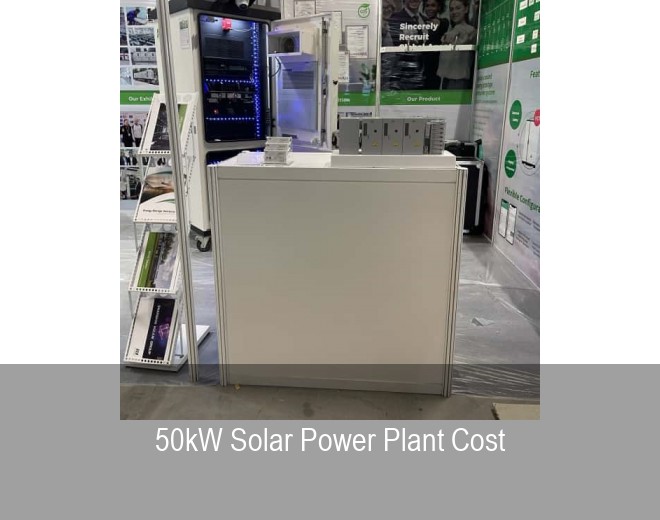Cost Analysis of Solar Power Plant

Table of Contents
The Upfront Price Tag
when considering a solar power plant, the first question everyone asks is: "How much will this set me back?" In 2023, utility-scale solar projects averaged $0.89 per watt globally. But wait, no... that's just the photovoltaic modules. The real cost analysis needs to account for:
- Solar panels (33-50% of total costs)
- Inverters and balance-of-system components
- Land preparation and mounting structures
Take India's Bhadla Solar Park as an example. They've achieved installation costs 18% below the global average through bulk procurement. But here's the kicker - soft costs like permits and financing can eat up 25% of your budget before you've even bolted down the first panel!
The Panel Price Rollercoaster
Back in 2010, polysilicon modules cost about $2.50/watt. Today? You're looking at $0.15-$0.30/watt. This 90% price drop didn't happen by accident - it's a perfect storm of Chinese manufacturing dominance and improved production techniques. But could trade wars or supply chain hiccups reverse this trend? That's the million-dollar question.
What Happens After Installation?
Here's where most solar energy cost calculations go wrong. They focus on shiny new panels while ignoring the long game. Operation and maintenance (O&M) typically runs $15-$35 per kW annually. Let's break that down:
- Panel cleaning (dust reduces efficiency by up to 30%)
- Inverter replacements every 10-15 years
- Land lease payments (if applicable)
Germany's Solarpark Weesow-Willmersdorf offers a telling case study. Their predictive maintenance system uses drone inspections and AI analysis, cutting O&M costs by 40% compared to traditional methods. Smart, right?
Location, Location, Location
Why does a solar farm in Arizona generate 70% more power than one in Seattle? It's not just about sunshine hours. Local incentives, labor rates, and even soil type play crucial roles. Consider:
- China's Yangtze River Delta region offers 15% tax breaks
- Australian outback projects face 22% higher transportation costs
- Middle Eastern plants spend 3x more on panel cleaning
The financial breakdown gets even trickier when you factor in grid connection fees. In Texas' Competitive Renewable Energy Zones, transmission costs can account for 18% of total expenses. Meanwhile, off-grid projects in Africa completely bypass this hurdle but face higher battery storage costs.
Cutting Costs Without Cutting Corners
"Can we make solar even cheaper?" That's the question keeping developers up at night. Three game-changers emerging in 2024:
1. Bifacial panels capturing reflected light (boosting output by 11%)
2. Robotics for faster installations
3. Power purchase agreements with built-in inflation protection
California's new photovoltaic recycling mandate adds an interesting twist. While initially increasing disposal costs by 8%, it's expected to drive down material expenses long-term through improved silver recovery. Talk about silver linings!
Your Burning Questions Answered
Q: How long until a solar plant pays for itself?
A: Most utility-scale projects achieve ROI in 7-12 years now, compared to 15+ years a decade ago.
Q: Does cloudy weather ruin the economics?
A: Not necessarily. Germany's cloudy climate still supports 60GW of solar capacity through efficient thin-film tech.
Q: Are maintenance costs higher than wind farms?
A: Actually, solar O&M runs 30-40% cheaper than wind due to fewer moving parts.
Related Contents

0.5 Megawatt Solar Power Plant Cost
When planning a 0.5 megawatt solar power plant, most folks immediately ask: "What's the bottom line?" Well, here's the kicker - in 2024, you're looking at anywhere between $800,000 to $1.3 million. But why such a wild swing? Let's peel back the layers.

3kW Solar Power Plant Cost
Let's cut through the confusion: a 3kW solar system typically ranges from $4,000 to $9,000 before incentives in 2024. But why the massive price difference? Well, it's sort of like asking "How much does a car cost?" - the answer depends on what's under the hood.

25kw Solar Power Plant Cost
Let's cut through the solar sales talk. A 25kW solar power plant cost typically ranges between $37,500 to $52,000 in the U.S., but wait – that's before incentives. Now, why such a spread? Well, it's like buying a car. You've got your base model (basic panels), premium package (micro-inverters), and custom rims (battery storage).

Benchmark Cost of Solar Power Plant by MNRE
Ever wondered why India's benchmark cost of solar power plant by MNRE became the talk of renewable energy circles this quarter? The Ministry of New and Renewable Energy (MNRE) recently set new reference prices that've shaken up project bidding across states. These aren't just numbers – they're shaping India's race to hit 500 GW renewable capacity by 2030.

50kW Solar Power Plant Cost
Let's cut through the solar sales jargon. A 50kW solar power plant cost typically ranges from $65,000 to $125,000 before incentives in 2024. But why such a wide range? Well, here's the kicker – it's not just about slapping panels on a roof.




 Inquiry
Inquiry Online Chat
Online Chat